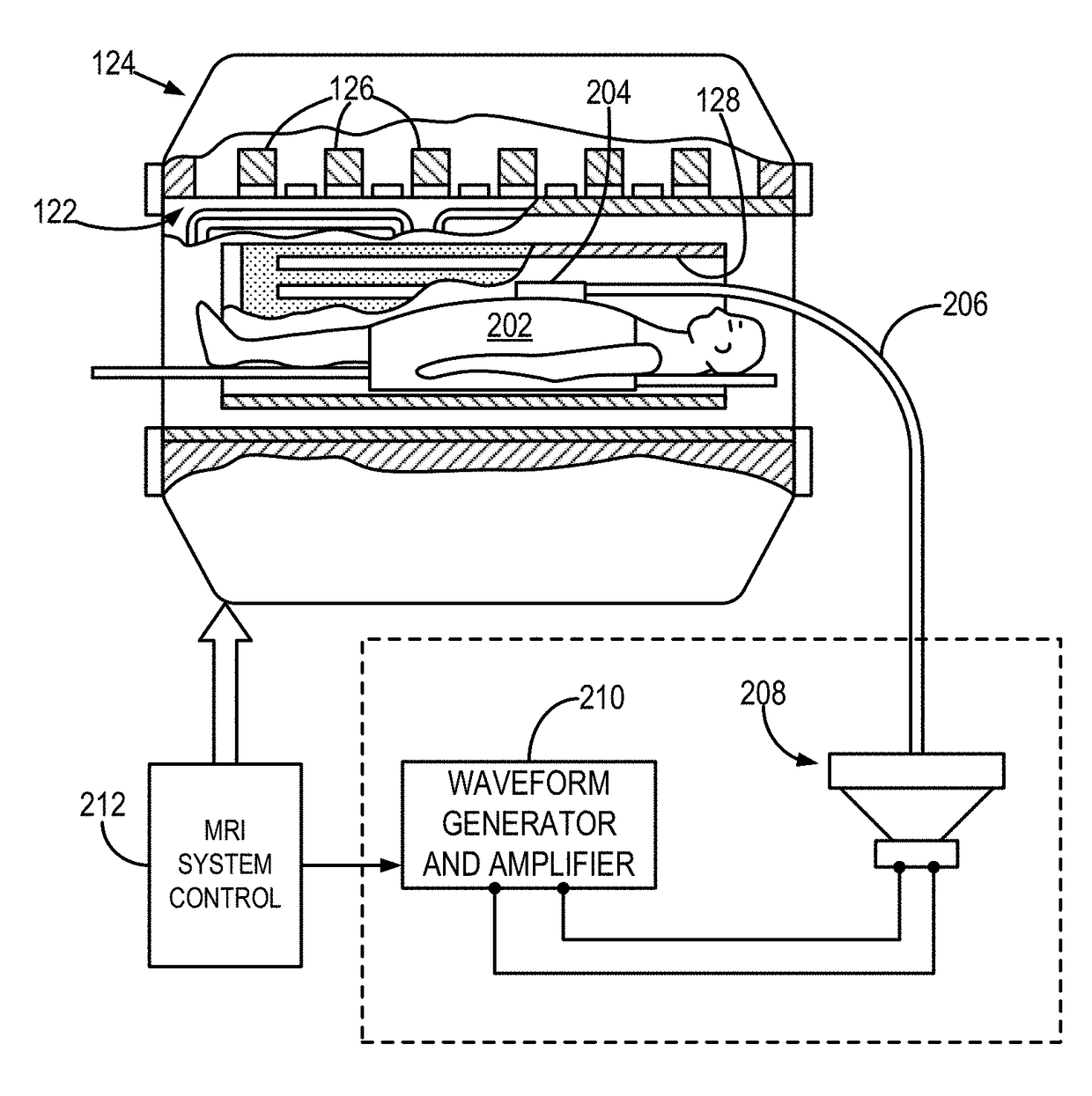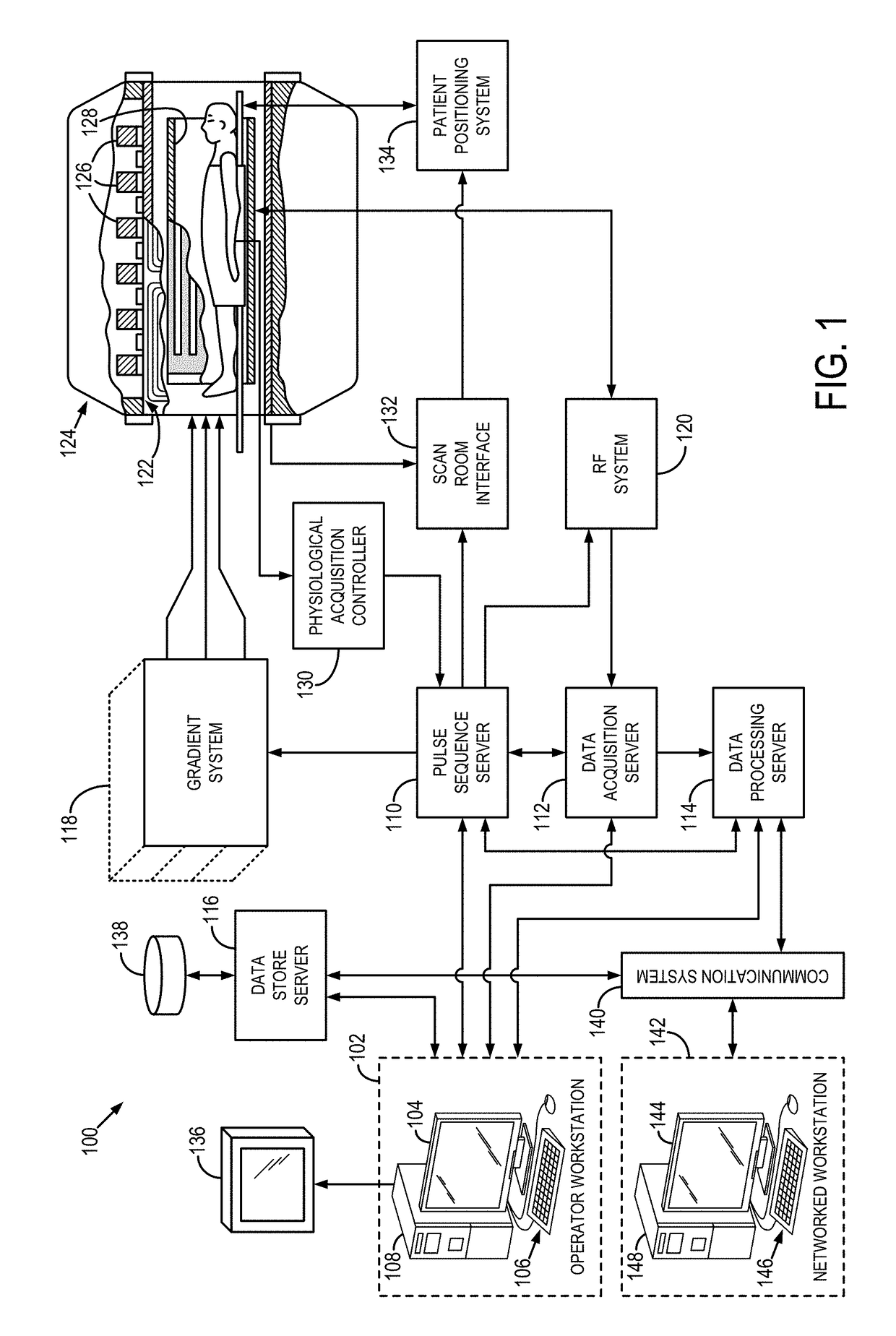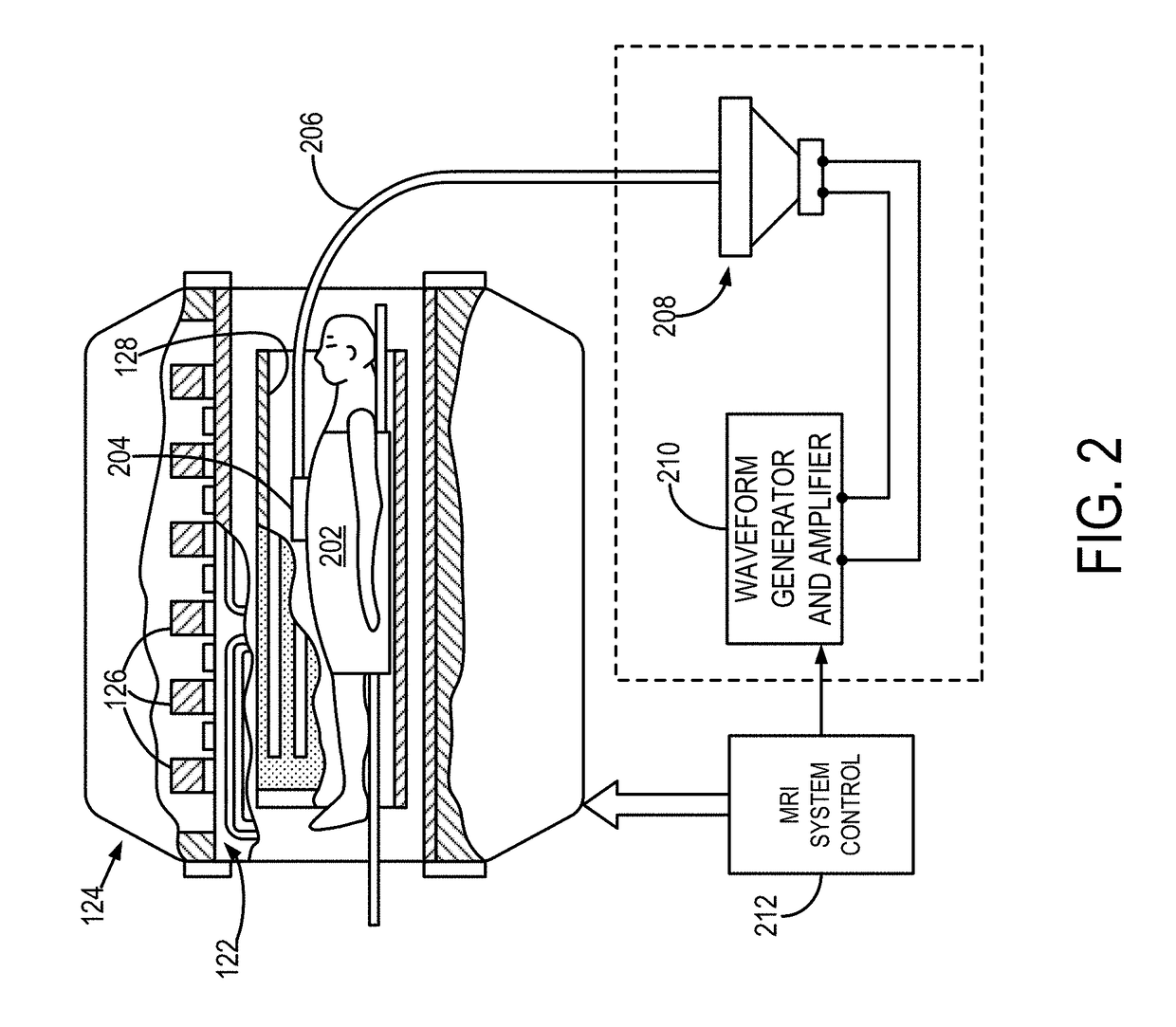System and method for generating nonalcoholic fatty liver disease activity score (NAS) using magnetic resonance elastography
a activity score technology, applied in the field of system and method for generating nonalcoholic fatty liver disease activity score (nas) using magnetic resonance elastography, can solve the problems of high cost of procedure, hcc risk, and affecting the accuracy of liver biopsy
- Summary
- Abstract
- Description
- Claims
- Application Information
AI Technical Summary
Benefits of technology
Problems solved by technology
Method used
Image
Examples
Embodiment Construction
[0018]The present disclosure relates to a system and method for performing magnetic resonance elastography (“MRE”) to non-invasively determine clinically-accepted information that, historically, has only been able to be derived using interventional procedures and laboratory pathology, such as to derive NAS scores diagnosing NAFLD and NASH patients non-invasively.
[0019]Magnetic Resonance Imaging (MRI) offers chemical-shift imaging and spectroscopic methods for the quantification of steatosis, or lipid content, with relatively high accuracy without any invasive procedures or radiation exposure, compared to invasive liver biopsy, qualitative ultrasound and semi quantitative CT approaches. Thus, MRI-assessed fat fraction should be a more accurate imaging biomarker for steatosis extent and can play an important role in NAS prediction. Magnetic Resonance Elastography (MRE) is an MRI-based technology for quantitatively mapping the mechanical properties of tissue. There is increasing eviden...
PUM
 Login to View More
Login to View More Abstract
Description
Claims
Application Information
 Login to View More
Login to View More - R&D
- Intellectual Property
- Life Sciences
- Materials
- Tech Scout
- Unparalleled Data Quality
- Higher Quality Content
- 60% Fewer Hallucinations
Browse by: Latest US Patents, China's latest patents, Technical Efficacy Thesaurus, Application Domain, Technology Topic, Popular Technical Reports.
© 2025 PatSnap. All rights reserved.Legal|Privacy policy|Modern Slavery Act Transparency Statement|Sitemap|About US| Contact US: help@patsnap.com



